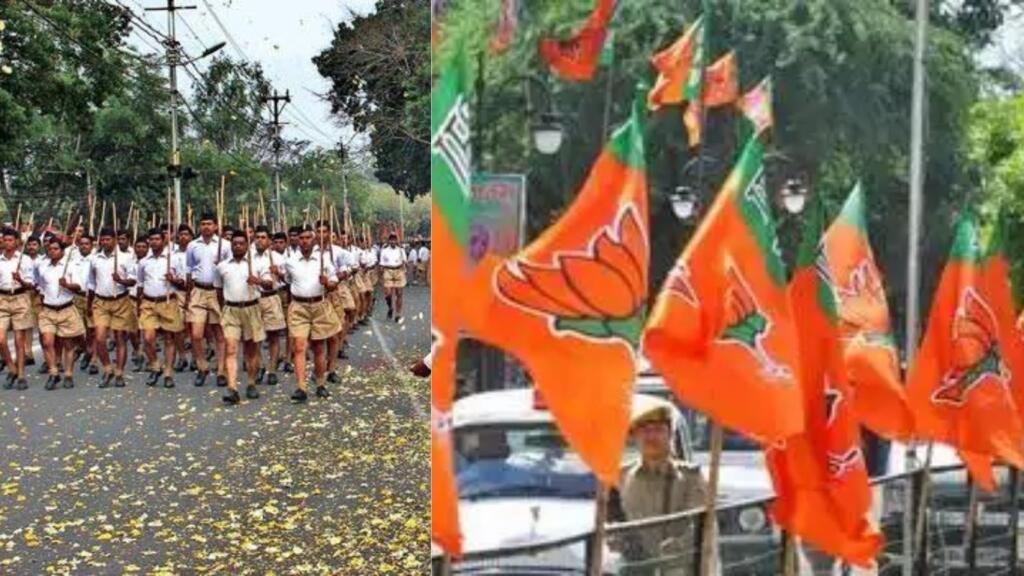The Rashtriya Swayamsevak Sangh (RSS), the ideological parent of the Bharatiya Janata Party (BJP), conducted nearly 50,000 ‘drawing room’ meetings across its eight zones in Delhi ahead of the February 5 assembly elections. The meetings aimed to mobilise voters and educate them on key issues while urging support for BJP candidates.
The RSS operations in Delhi are divided into eight vibhags (zones), covering 30 districts and 173 nagars (small city units). Before the Election Commission of India (ECI) announced the poll dates, each vibhag was instructed to organise these meetings in localities, offices, institutions, shopping centres, schools, and colleges.
A senior RSS functionary stated, “In my vibhag, nearly 2,000 drawing room meetings were held by Sangh swayamsevaks, while nearly 4,550 were organised by workers of other anushangik (frontal) organisations like Bhartiya Mazdoor Sangh (BMS), Sewa Bharti, Vishva Hindu Parishad, Akhil Bhartiya Shaikshik Mahasangh, Hindu Jagran Manch, and others.”
According to reports, over 4 lakh people attended these gatherings, where the RSS emphasised its ‘panch parivartan (five changes)’ and asked participants to vote for the BJP in the national interest. Discussions focused on key issues such as environmental pollution, family values, corruption, social harmony, and Swadeshi.
The RSS has played a crucial role in BJP’s electoral campaigns, particularly since the 2014 Lok Sabha elections. In the recent Haryana assembly elections, the BJP won 48 out of 90 seats, while in Maharashtra, the Mahayuti alliance, including BJP, Shiv Sena (Shinde faction), and NCP (Ajit Pawar faction), secured 237 of 288 seats. While the poll pundits had written BJP off in these state assembly elections, the BJP’s changed strategy supported by RSS’s outreach was accredited for these unprecedented successes. Since, then, RSS playing a similar role in the Delhi assembly elections and intensifying the tide in BJP’s favour has been playing up not just in the minds of poll pundits, but also in back of the mind of AAP Supremo Arvind Kejriwal, and incidentally, his desperation in the past few weeks displays his anxiety.
As part of its Delhi campaign, the RSS held regular review meetings at the vibhag, district, and nagar levels to assess the impact of its outreach efforts. The final such meeting was held on Monday, following which each vibhag pracharak submitted data to the state (prant) unit.
An RSS functionary from western Delhi said, “Our work was focused on educating voters to go to the booth and vote in national interest. But yes, we were asking them to vote for BJP, as they are working in the national interest.”
The RSS had initially set a target of 60,000 meetings. Sources said that pracharaks working in affiliated organisations but based in Delhi were also actively involved. The presence of a large number of women at these gatherings was also noted.
Arun Kumar, RSS’s sah-sarkaryawah overseeing BJP’s election campaign, held meetings in various parts of Delhi to supervise the efforts. Another RSS functionary acknowledged that while their outreach was extensive, more work was needed to engage those outside their traditional support base.
In triangular competition, where stakes are very high, the Delhi assembly election is witnessing intense competition among AAP, BJP, and Congress. The RSS’s groundwork is expected to play a crucial role in shaping voter sentiment on polling day and may positively impact BJP election results.
